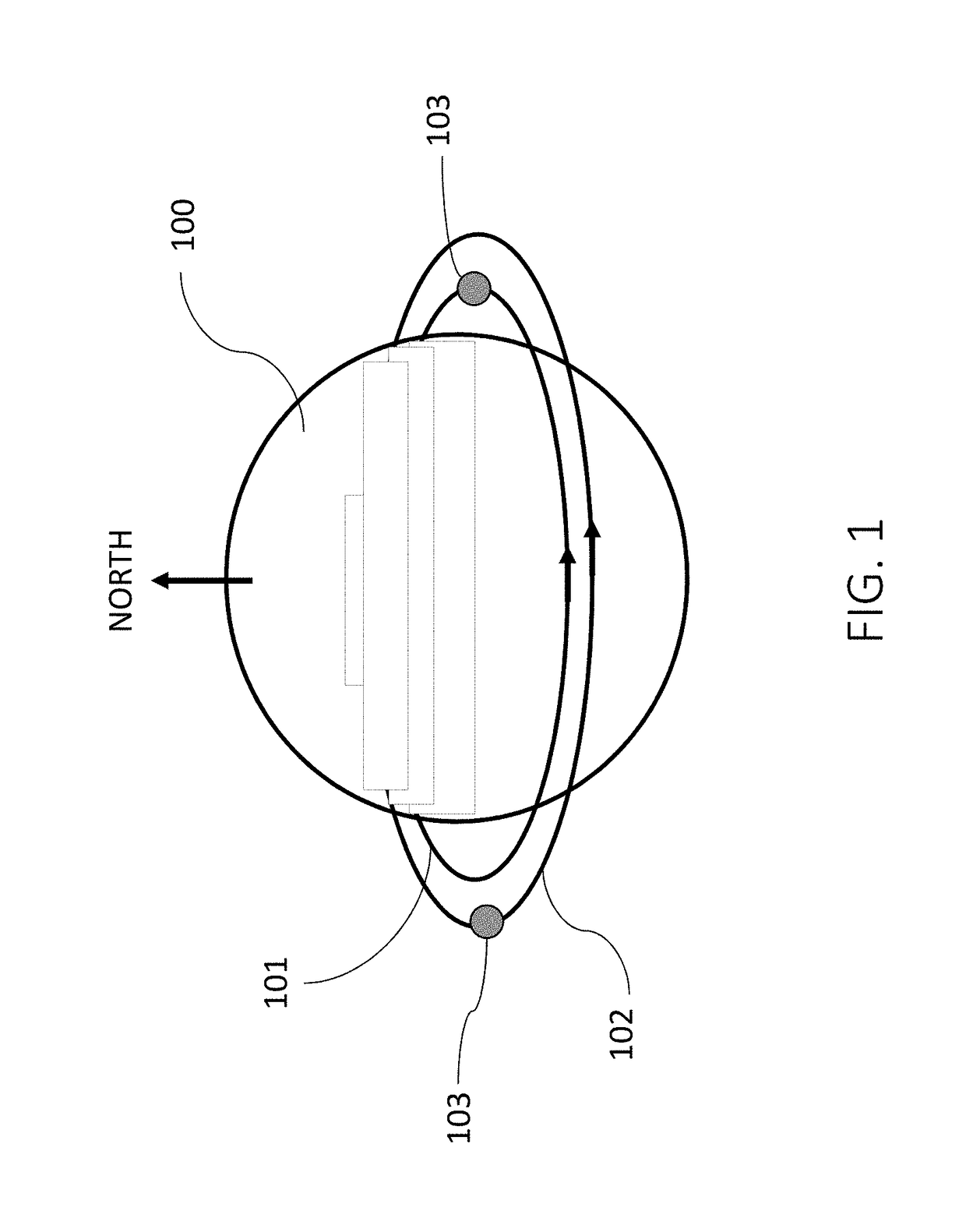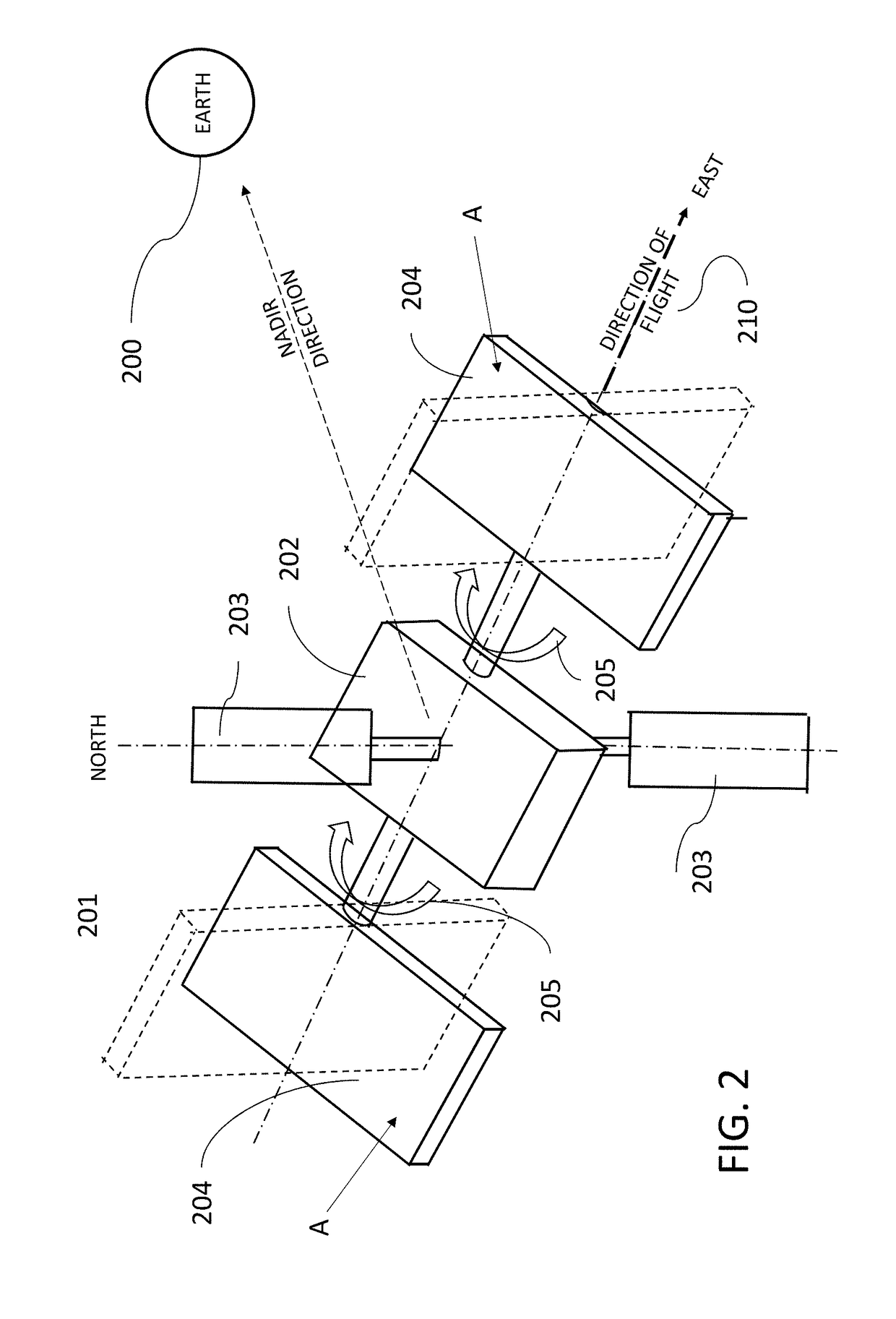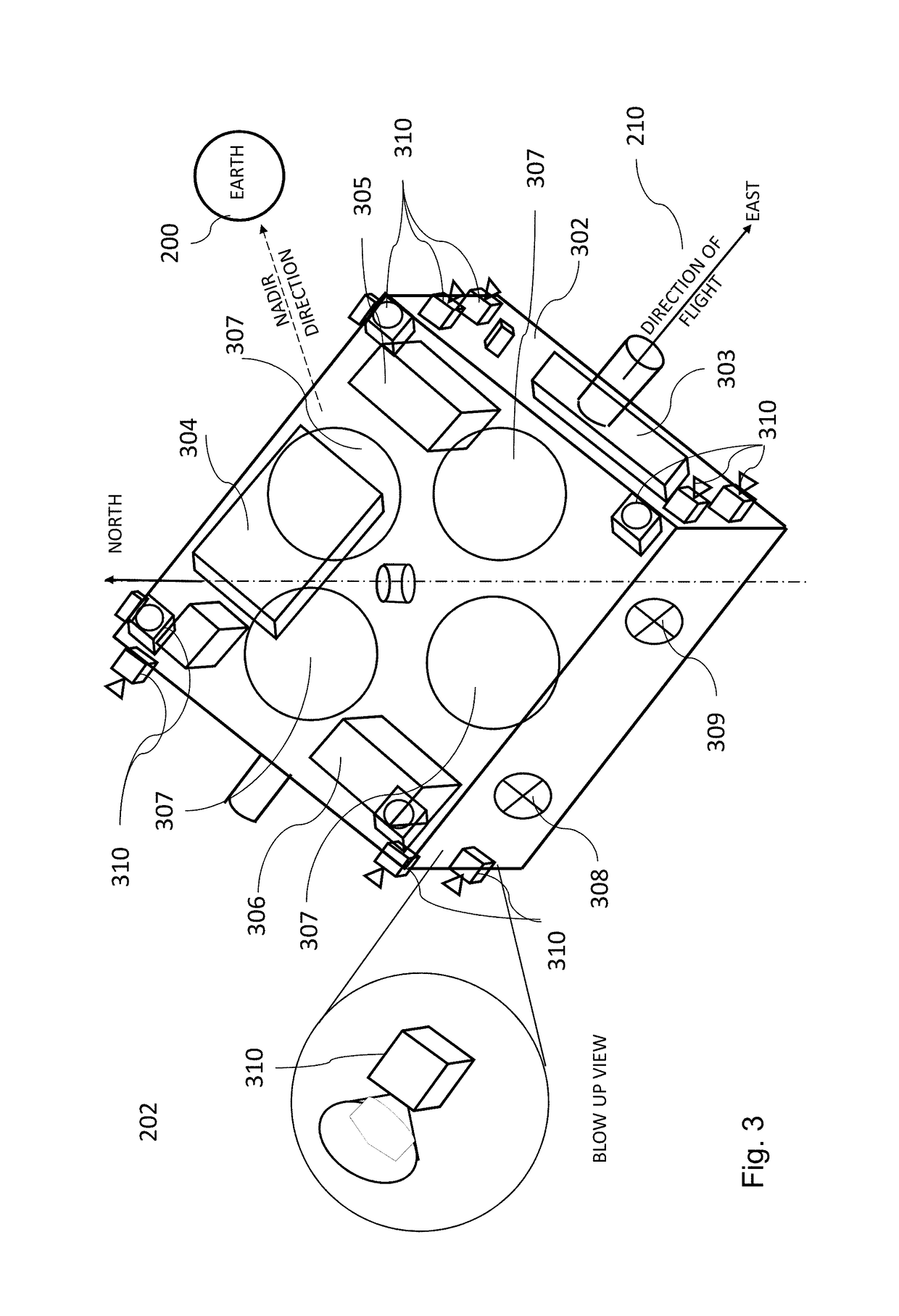Apparatus and Methods for Orbital Sensing and Debris Removal
a technology of orbital sensing and debris, applied in the direction of meteorite protection, transportation and packaging, cosmonautic vehicles, etc., can solve the problems of orbital debris threatening operational satellites, catastrophic and less, but still significant damage to operational satellites or other spacecra
- Summary
- Abstract
- Description
- Claims
- Application Information
AI Technical Summary
Benefits of technology
Problems solved by technology
Method used
Image
Examples
Embodiment Construction
[0028]The instant disclosure provides one or more constellations of satellites in equatorial (or near-equatorial) orbit that incorporate both debris sensing / tracking capabilities and debris removal capabilities. Embodiments of the disclosure are described herein with reference to a satellite constellation that includes multi-function satellites configured to sense, track, and remove debris. That is, according to the exemplary embodiments discussed herein, satellites in the constellation are equipped both with sensor array(s) for RSO detection, tracking enhancement, and increased trajectory modelling precision, and with a debris collection mechanism, such as a debris impact pad.
[0029]It should be understood, however, that the teachings herein can also be applied in other contexts. For example, it is contemplated that a first satellite constellation can include exclusively sensing / tracking satellites, while a second satellite constellation can include exclusively debris removal satell...
PUM
 Login to View More
Login to View More Abstract
Description
Claims
Application Information
 Login to View More
Login to View More - R&D
- Intellectual Property
- Life Sciences
- Materials
- Tech Scout
- Unparalleled Data Quality
- Higher Quality Content
- 60% Fewer Hallucinations
Browse by: Latest US Patents, China's latest patents, Technical Efficacy Thesaurus, Application Domain, Technology Topic, Popular Technical Reports.
© 2025 PatSnap. All rights reserved.Legal|Privacy policy|Modern Slavery Act Transparency Statement|Sitemap|About US| Contact US: help@patsnap.com



